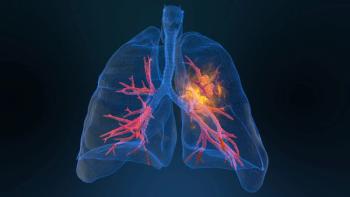
Oncology NEWS International
- Oncology NEWS International Vol 4 No 11
- Volume 4
- Issue 11
Vpr Gene Linked to HIV Immune Dysfunction
LOS ANGELES-Researchers at the AIDS Institute of UCLA have identified an HIV gene that appears to play a role in HIV immunosuppression by inhibiting reproduction of CD4+ T cells
LOS ANGELES-Researchers at the AIDS Institute of UCLA have identifiedan HIV gene that appears to play a role in HIV immunosuppressionby inhibiting reproduction of CD4+ T cells.
The Vpr gene expresses a protein that prevents infected T cellsfrom progressing normally through the cell cycle. Cell growthstops in the G2 phase or early in mitosis. The research showedthat expression of the Vpr gene protein is necessary and sufficientto cause the arrest (Journal of Virology 69:6304-6313, 1995).
Study investigator Jeremy B.M. Jowett, PhD, said in an interviewthat more recent data suggest that these cells probably eventuallyundergo apoptosis, thus implicating the Vpr gene in the ultimatedrastic reduction in CD4 cells seen in late-stage HIV infection.
This model for HIV-induced immune dysfunction opens up possiblenew avenues of therapy. "At this stage, we don't know howthe protein acts," Dr. Jowett said. "It could be bindingto another protein or turning on other genes, acting as a transcriptionenhancer. Once we understand it, we can try to block it, perhapsby blocking receptors or by antisense RNA techniques to inhibittranscription."
Importance to Cancer Research
These findings could also be important in cancer research. Inlaboratory experiments, he said, the Vpr protein arrested thegrowth of HeLa human cervical cancer cells, which led to celldeath. Dr. Jowett's lab has also shown that the Vpr protein canarrest the growth of p53-deficient retinoblastoma cells.
Articles in this issue
about 30 years ago
Managed Care Compels Evaluations of Cost Effectivenessabout 30 years ago
FDA Panel Recommends Approval of Breast Cancer Drugsabout 30 years ago
Total Outpatient Program Cuts Transplant Costabout 30 years ago
DNA Repair Enzyme Decreases Skin Cancer Incidence in Animalsabout 30 years ago
Notion of 'Global' Microbial Resistance May Be Oversimplifiedabout 30 years ago
Outpatient Oral Antibiotics Safe, Effectiveabout 30 years ago
Casodex Available for Advanced Prostate Cancerabout 30 years ago
Low-Dose Acyclovir Recommended for HSV Prophylaxis in Leukemic PatientsNewsletter
Stay up to date on recent advances in the multidisciplinary approach to cancer.

















































































